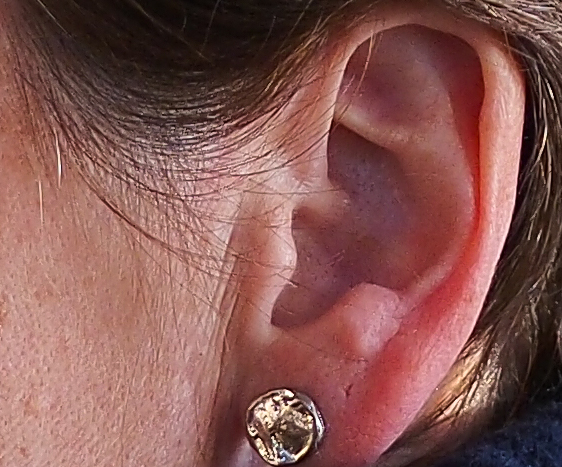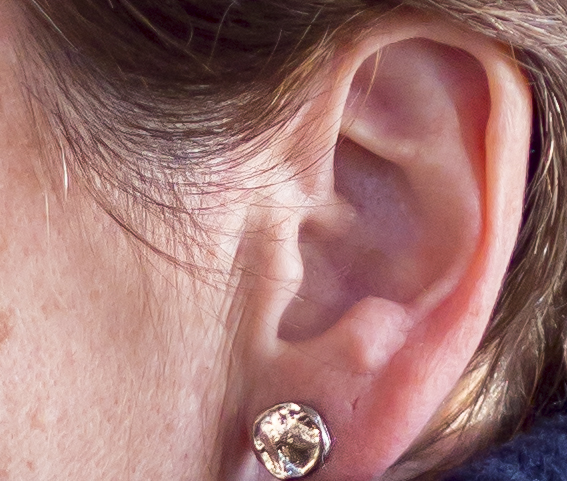We often (too often?) use terms like sharpness or resolution when describing the qualities of an image. I suppose then a discussion on the types of sharpness is warranted.
This is tough to explain well, but is based on my own perceptions over the last few years, especially when trying to define the differences between Fuji, Canon, Sony and M43 sensors and lenses for my own needs.
What do I mean by the types of sharpness?
Many years ago I had a discussion with an experienced dark room technician about the best choices in enlarger lenses available (35mm format).
He felt the Schneider 50mm f2.8, was too "brittle" sharp. He said it was harsh and unforgiving.
The Nikkor 50mm was "simple sharp". It provided a clear and defined image, that lacked a delicateness he preferred for detailed landscape prints, it was better suited to portraits.
The Rodenstock was just right (said Goldie Locks). It was delicate, but forgiving. Perfect for high quality enlargements that stretched to the limit 35mm negs.
These comments stayed with me.
I think that now, more than in the past, the character of sensor and lens combinations can be explained using similar terms. In the film era, a lot of things were fixed and consistent, but in the digital era, many things can add variation and as sensor technology reaches a point of sufficiency, this character is what separates them.
For example, my poison of choice is Olympus. I would characterise their sensors as providing "simple sharpness".
EM5 and 17mm from a Fuji/Olympus show down. The camera and lens are good examples of "simple" sharp. There is actually more detail in the flower centre than in the Fuji image below.
Part of the simple character of the Olympus images comes from the natural colour warmth of their sensor (their character), part from depth of field rendering and part from the lenses. The Pen F is less like this, but still has this character. It reminds me of a really clean and sharp 35mm slide image.
This is the Fuji XE-1 and 23mm comparison image. This is what I would call "delicate" or "glassy" sharp. Some of this comes from tonal separation and white balance, but it is hard to prise out what comes grudgingly.
Fuji in contrast provides glassy or delicate sharpness. The viewer tends to become less aware of sharpness as a component of the image, it just is. This is closer to a medium format film image, not in real enlargeable quality, but feel. The actual fine rendering is often smoothed away, but the perceived clarity is extraordinary, almost defying or transcending terms of quality. I found out after taking the above image that the whole morning the camera had been set to small jpeg. This looks to have added to the delicateness of the file.
There is smooth sharpness. Both of the above brands can achieve this, but the best I have used is Canon.
A Canon image crop from last year. This is a "smooth" sharp image. The impression of detail is strong but looking closely, edge acutance (contrast) is not strongly defined. One of my main drivers for switching to Olympus a few years ago was a strong (maybe too strong) reaction to the clearer sharpness I was seeing. Something I over estimated was it's importance. One of Canon's qualities is image smoothness. I later came to miss and spent a long time trying to extract from the EM5 files, not difficult technically, but I resisted on principal.
Finally is busy or detailed over edge-acutance sharpness. The Sony NEX 7 and the little clutch of primes I had with it was great at this. This is simply the result of lots of pixels, supported or not by lenses of equal capability.
Busy sharpness is the type I like the least, but cannot really fault it. This type of rendering is the result of high resolution sensors, often supported by lenses that cannot keep up or strong filtering that tends to soften the very detail the sensor is capable of rendering. Already old fashioned, the brands that offered this recently are now moving to a harder sharpness as a result of reducing or removing filtering from their sensors to address customer demand. High pixel count cameras with basic zoom lenses provide this in spades.
NEX 7 and the under rated Sony 35 f1.8 wide open.
Plenty of smooth and natural detail, after a little work, but not bitingly sharp (does it need to be?).
This rendering seems to really suit mono images as the busy details show up naturally as great mid range or "micro" contrast.
Brittle or Hard (also delicate and glassy) sharpness is reliant on cleanness of image, high edge contrast (acutance), often at the expense of finer details. Manufacturers aim for this in their jpeg images, using contrast and sometimes over sharpening to add obvious punch. These images are often near noiseless, but can push reality a little and can easily go too far. I love this type of sharpness if it comes off. It reminds me of medium format "effortless" film sharpness and it prints well., when done badly, it just looks "digital". Fuji jpegs show their true quality here.
A similar crop of the same eye as above taken with a Fuji in jpeg mode and the 60mm macro wide open (different light though).
A heavy crop of another eye image from a Fuji XE-1 and 60mm macro (jpeg). Smooth, clean and glassy. This was also my ideal when shooting Canon. The differing light and therefore different processing show how hard it is to get consistent results.
Simple sharpness is usually the result of low or no low pass filtering on the sensor and an image shot in RAW mode. Often lower contrast, especially in controlling highlights, thus reducing brilliance but increasing naturalness. These images can show good micro contrast and are good for strong contrast subjects such as metallic surfaces. I often think of this as "American" sharpness as it reminds me of the Kodak film images from the 80's and 90's that I grew up with. This type of sharpness shows us that perceived sharpness is not reliant on lots of pixels. EM5's with 17, 45, 12-40, 20mm Panasonic and 75-300 are all strong here as well as older sensors like the one in my 10D Canon.
Another tight crop (different age, same subject) from An Olympus with 45mm f1.8. Simpler, but detailed, less forgiving of blemishes etc. (the colour is due to very different lighting). High levels of noise reduction can create a smoothness, without reducing detail too much, but the delicateness of other sensors is missing unless a very hard sharp lens is used like the 75mm.
As tight a crop from a full body RAW original image, using the 75mm and in the past the Pana-Leica 25mm. This is half way between Olympus hard (lens) and simple (sensor) soft. On later examination, maybe this one was pushed a little hard.
Other factors obviously have an effect here. Processing is capable of mimicking some looks from one brand to another, but this is often fighting the natural rendering, trying to substitute one for another rather than playing to the natural strengths the system offers. The sharpening radius tool for example is useful for creating finer or bolder edge sharpness. Often jpeg sharpening is heavy handed, using wider/harsher radii as this forms a stronger impression of sharpness, but is unnatural looking on close inspection. Fuji and later model Olympus cameras manage delicate sharpening in jpegs, much closer to a well processed RAW image.
The pair of images above (roughly 200% crops) show the difference in sharpening between a jpeg on the left (EM5 -1 sharpening and NR off) and RAW (basic pre set and a little brush work over the hair). the impression of most jpegs is they are sharper, but the fine detail is often lost to illusion and can feel forced. Notice how the RAW just looks more natural and could tolerate a lot more sharpening.
The full jpeg (EM5, 75mm f2), showing the impression of snappy detail. This would print up well to fairly large sizes, with the print medium helping to smooth perceived harshness. No doubt the designers want their jpegs to deliver high satisfaction to casual viewers, leaving RAW mode for pickier types.
The closest I can get with my kit to "delicate/hard" sharp is with my 75 or 40-150mm on the Pen F. The best "simple" sharp I get is from my EM5 and 12-40, 17mm* and the Panasonic 20mm combinations. That is not to say one combination is measurably sharper than the other, but rather, one has finer visual resolution at 100%, on screen, while the other offers a clear and more straight forward image without (literally) fine, hair splitting detail. Ask a model which they would prefer at a shoot?
Printing tends to blur the differences and I find, larger screen viewing exaggerates differences.
Sharpness is a measurable and often measured thing. Anything that can be measured often has to be measured for us to accept a difference, but maybe we should look at our less mathematical, more visceral response rather than take the test charts word for it.
*I really struggled to accept the 17mm lens in it's role as my primary wider lens, due mostly to poor reviewers comments, especially when compared on the test bench to any of the longer primes in the Olympus stable. I now consider it to be one of my most stable lenses, delivering over and over. Using it has allowed it's strengths to show through. They are different strengths to the 75mm, the 45mm and the 25mm, but are no less relevant.
It looks to me that in wider lenses, Olympus has concentrated on the qualities an image will show over the full frame (focus transition, micro contrast and smoothness) and as the lenses get longer, they concentrated on snappier rendering to better suit the likely subject matter. Both my 17/75 and 12-40/40-150 pairings show these characteristics.
My thanks to Meg and Tom for the use of their eyes and ears.












